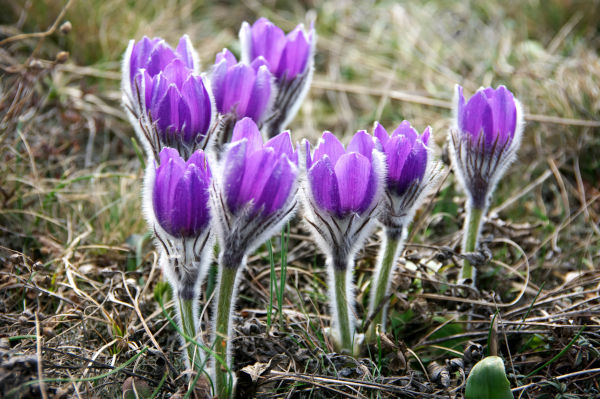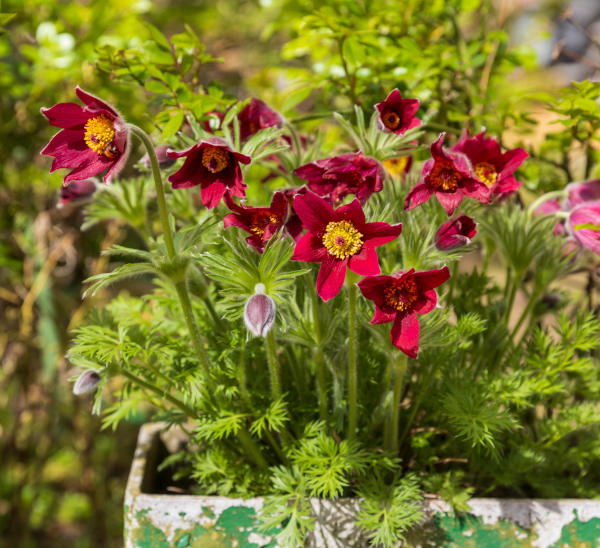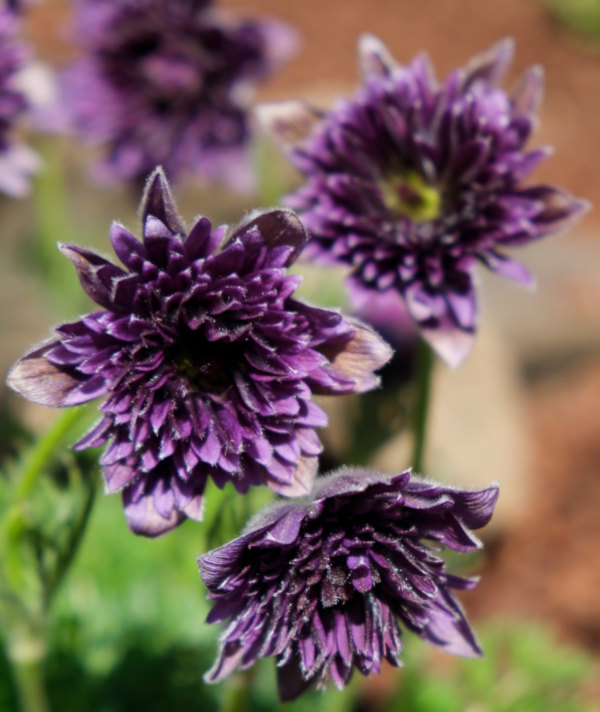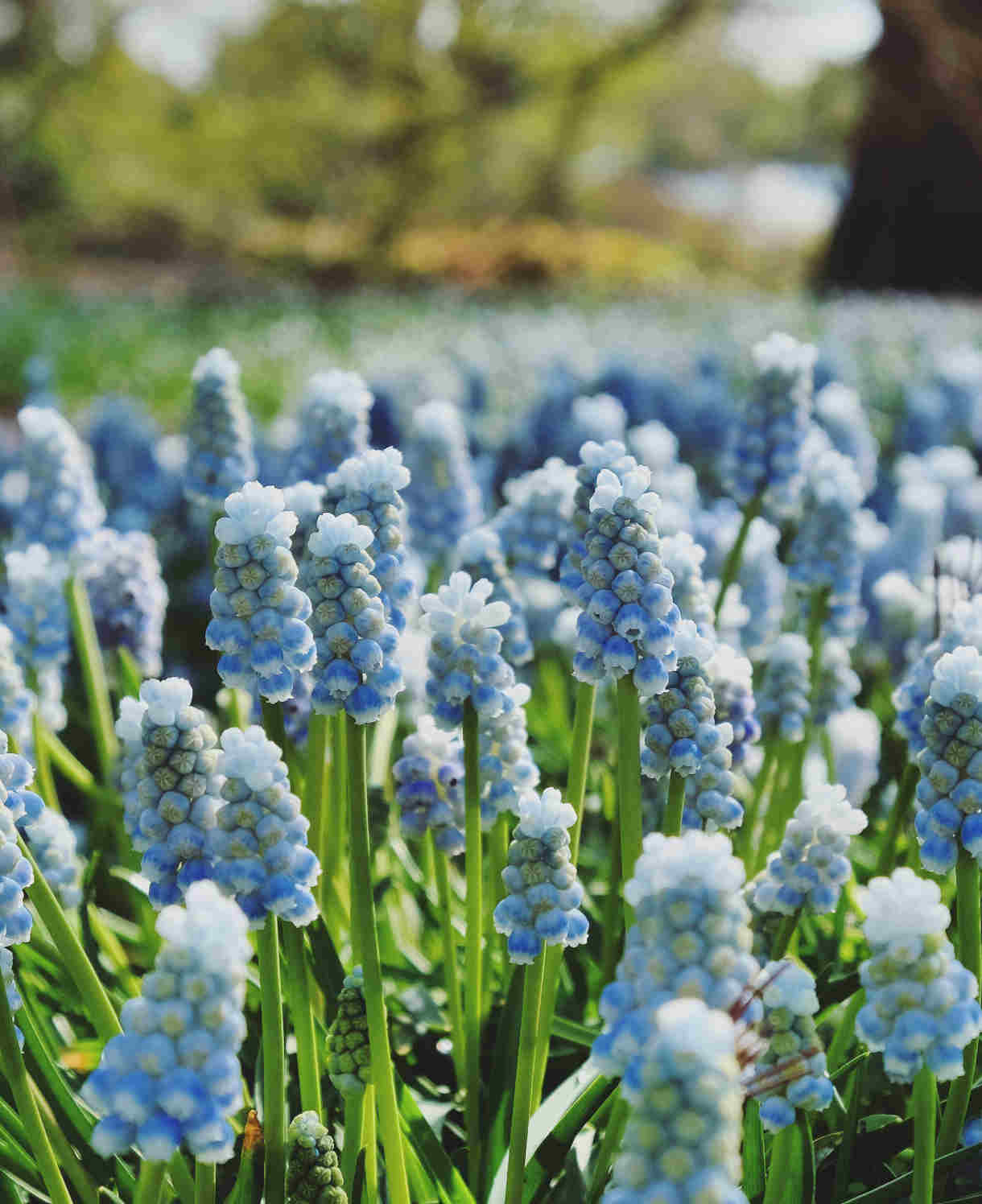How to grow Pulsatilla
This member of the buttercup family contains over 30 species of clump-forming perennials, usually found growing in alpine meadows. They are prized for their silky, cup-shaped, flowers which appear early in spring and are joined shortly after by fine, ferny leaves. These go on looking good after the flowers have finished and given way to attractive, fluffy seedheads which remain well into summer. Cultivated forms offer a variety of colours.
At Hayloft we offer forms of Pulsatilla vulgaris, common name pasque flower, native to the UK and mainland Europe.

Zantedeschia is a genus of flowering plants from the family Araceae and is native to southern Africa. With a rich history dating back to the Ancient Romans, these deciduous or semi-evergreen perennials have been used as a symbol of celebration. Zantedeschia was Named after Professor Giovanni Zantedeschia, an Italian botanist.
There are two main forms of Zantedeschia: hardy and tender. Hardy forms of the plant can be grown outdoors, enjoy moist soil and full sun or partially shaded conditions - these are known as Arum lilies. Tender forms of Zantedeschia prefer being grown in containers or pots and should be brought inside over the winter - these are known as Calla lilies.
With tuberous flora in all colours from whites, yellows and oranges to deep reds and purples, Zantedeschias are not to be overlooked in any garden, as long as they have sufficient sunlight to grow in.
Ready to learn more about growing Zantedeschia? Read on for all there is to know...

Key Information
Soil pH
Position
Hardiness


Where & when to plant Pulsatilla
Position- Full sun
Soil- Fertile and very well-drained
Flowering Period- Spring (March to May)
Hardiness- Hardy
For best results, plant in autumn or spring. An autumn planting can be done by those gardening in mild conditions (and broadly speaking, this is the southern half of the UK). For those liable to cold winters, it is best to wait until spring (generally the northern half of the UK). Planting can also be carried out in summer, though be prepared to water regularly.
Pulsatilla does best in free-draining conditions such as a rockery, wall, a trough or container filled with a gritty compost mix, or a sandy, stony, or sloping border.
How to plant Pulsatilla
In the ground
- Clear the chosen area of weeds.
- Dig a planting hole several times larger than the root ball. Now is the time to improve your soil with a generous addition of well-rotted organic matter and plenty of horticultural grit or sharp sand.
- Place the plant in the hole, ensuring the top of the root ball sits level with the surface of the soil. Too low and the plant may rot, too high and the roots can dry out.
- Backfill with soil and firm in gently.
- Soak well with water.
- Mulch with well-rotted organic matter.
In a container
- Choose an appropriate container, ensuring there are plenty of drainage holes.
- Use a good quality potting compost with a high ratio of horticultural grit mixed in (aim for around 50% grit), and, if not already present in the compost (check the description on the bag) some slow-release fertiliser granules.
- Start by partially filling the pot with compost; enough so that when placed on it the upper surface of the root ball is about 3cm lower than the top of the pot.
- Infill all the space surrounding the root ball with compost, firming down with your fingers then adding a little more so the plant is held tight.
- Pick up the pot (if you can) and lightly tap on the potting bench or ground a few times to help further settle the compost around the plant.
- Soak well with water.
- A mulch with horticultural grit will look attractive and help to prevent a ‘cap’ or crust forming on the top of the compost (something container plants can suffer due to the artificial nature of their watering).

What to plant with Pulsatilla
Try pairing with other sun and drainage-loving companions with similarly dainty proportions, such as erigeron, muscari, arenaria, and antennaria.



How to care for Pulsatilla
Pruning and Deadheading
None required.
Watering
Water pulsatilla until established (generally throughout the first growing season in the ground) after which it tends to be drought tolerant.
Container-grown pulsatilla will require regular watering throughout the growing season.
Cold Protection
Pulsatilla is fully hardy, meaning with adequate drainage it will withstand even a cold UK winter without the need for additional protection.
As with all plants, container-grown specimens can be more vulnerable to the cold. It can therefore be worth wrapping pots with hessian or fleece when a very cold snap is expected.
Pests and Diseases
Pulsatilla tends to be relatively pest and disease free, though you may find slugs and snails develop a taste for its leaves, particularly when they are newly emerging.
Encouraging natural predators into your garden, such as birds, frogs, toads, and hedgehogs, will make a big difference. Torchlight searches after dark (when slugs and snails are at their most active) are also effective, allowing you to collect the offending molluscs in a bucket. Place on the compost heap, or in a part of the garden containing less vulnerable plants.
Like most plants, once pulsatilla is well established it tends to be better able to tolerate the actions of slugs and snails without the need for intervention.
How to propagate Pulsatilla
Pulsatilla is best propagated by seed, collected and sown as soon as it is ripe. It is worth noting that pulsatilla can be slow to grow and may not flower for a few years. It resents root disturbance, so plant out when young and leave undisturbed from then on.
- Seeds are typically ready for collecting in late summer to early autumn when the seedheads have dried and turned brown.
- Snip the seedheads from the plant using scissors or secateurs. Try to do this in dry conditions, and place in a small paper bag or envelope.
- Fill a seed tray or small pot with a very well-draining compost mix.
- Sprinkle the seeds evenly over the surface of the compost, pressing lightly into the soil with a flat piece of wood or the bottom of another pot. Don’t bury them too deeply.
- Use a garden sieve to cover with a fine layer of compost.
- Water the soil gently with a fine spray until it is evenly moist but not waterlogged.
- Cover the seed tray with a clear plastic lid or plastic wrap to create a mini-greenhouse effect. This helps maintain consistent humidity. Label the tray or pots.
- Place the covered seed tray or pots in a coldframe or unheated greenhouse.
- Check periodically to ensure the soil remains evenly moist but not waterlogged.
- Once you notice seedlings emerging, remove the cover.
- When the seedlings have grown large enough to handle, transplant them into individual pots filled with a very gritty mix.
- Water regularly but avoid overwatering.
- Plant out when they look beefy enough to fend for themselves, following our ‘How to plant pulsatilla’ guide above.
Common Pulsatilla questions
Do pasque flowers spread?
Pulsatilla forms a contained, well-behaved clump, which will self-seed gently throughout the surrounding area unless seedheads are removed before they ripen.
Do you deadhead pulsatilla?
Only if you wish to avoid self-seeding. Otherwise, spent flowers can be left for their attractive, fluffy seedheads.
Is pulsatilla a perennial?
Yes, all species of pulsatilla are perennial. This means that, given the right conditions, they will return year after year in the garden.





